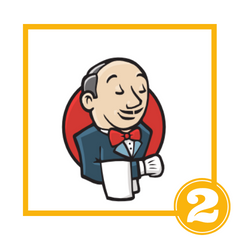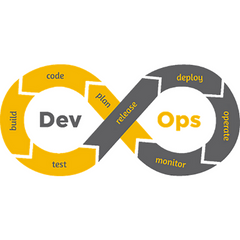The term "IT specialist" encompasses dozens of different job positions categorized by the IT technologies they work with. Whether you have ever considered stepping into the IT industry, or if you are already working in the field and seeking a clearer understanding of various job roles, you are in the right place.
We will introduce you to different IT positions: from developers and architects to analysts and project managers. We will also look at their job descriptions and the key skills they require.
The IT world offers a wide range of career opportunities. Discover their diversity with us.
Analyst roles
Analyst: Summarizes the main idea, purpose, and benefits of the software to be developed based on data. The goal at this stage is to analyze the data on which the entire solution will be designed.
Business Analyst: Gathers client requirements and evaluates them, acting as a bridge between business and development. Helps the client clarify what they expect from the developers and the software through thorough questioning. Analyzes client requirements and develops comprehensive diagrams and descriptions showing how the application will be used.
IT Analyst: Understands and analyzes technical requirements for applications. Works with developers to ensure the proposed solution is feasible. Also involved in verifying functionalities and testing systems.
BI/DWH Analyst: Analyzes data and business intelligence processes, designs, and implements data warehouses and data models to support decision-making processes.
Big Data Analyst: Analyzes large and complex data sets, identifies trends and patterns, and provides data-driven decision support.
Database Analyst: Analyzes data needs and processes, designs databases, and data models for efficient data storage and processing.
Architect roles
IT Architect: Based on analysis, designs how the entire project will work, its fundamental principles, and its supporting pillars. Architects and designers remain with the project throughout its duration to make necessary adjustments.
Cloud Architect: Designs and implements cloud solutions for companies.
Enterprise Architect: Designs the overall architecture of the company's information systems and IT infrastructure.
.NET Solution Architect: Designs and creates software architectures and solutions in the .NET Framework environment. This role includes requirement analysis, system architecture design, technology selection, and providing technical guidance to the development team.
Database Architect: Designs database system architectures, including defining data models and performance optimization.
Java Solution Architect: Designs and implements software solutions using Java technologies, including defining architecture and providing technical leadership to the team.
Tester/Quality Assurance Engineer roles
Tester/QA Engineer: Tests software, identifies bugs, and ensures its quality. There are different types of testers: manual tester, automation tester, and test manager, often combining roles within a project to focus on different aspects of testing.
Manual Tester/Manual QA Engineer: Manually tests software applications and systems step by step to verify functionality, quality, and user experience. Documents found errors and collaborates with the development team. May also involve creating test scenarios.
Automation Tester/Automation QA Engineer: Writes scripts (in a programming language) to automate testing processes. Runs these tests and documents found errors, working closely with the development team.
Test Manager: Manages and coordinates testing activities within projects, including test planning, resource allocation, test coverage monitoring, and bug management.
Developer roles
Front-end Developer: Works on the part of websites or applications visible to and interacted with by users. Focuses primarily on the visual functionality of the project, working closely with designers and graphic artists. Requires knowledge of JavaScript and frameworks like React or Angular. Collaborates with the product team, backend developers, and testers.
Back-end Developer: Develops and maintains technologies behind the front-end. This includes a combination of databases and software running on servers or in the cloud. Must master programming languages like Java, Python, PL/SQL, PHP, C# for building applications. Works with databases like MySQL and Oracle or SQL language. Expected to be methodical, logical, and analytical, working closely with product team members, product owners, and testers.
Full-stack Developer: Specializes in both front-end and back-end development.
Mobile Developer: Develops mobile applications for platforms like Android or iOS.
Game Developer: Specializes in developing computer games.
Database Developer: Develops and manages database systems, creating and maintaining databases and queries.
Java Developer: Develops applications and systems in the Java programming language, including analysis, design, and code implementation.
.NET/C# Developer: Creates applications and software solutions in the .NET Framework using C#, involving requirement analysis, design, implementation, and testing.
C/C++ Developer: Develops software and systems in C/C++ languages, including low-level programming and performance optimization.
Oracle Developer: Develops applications and systems using Oracle databases, working with SQL and PL/SQL.
MS SQL Developer: Develops applications and systems using Microsoft SQL Server, including creating database objects and queries.
JavaScript React.js Developer: Develops web applications and user interfaces using the React.js library in JavaScript.
JavaScript Angular Developer: Develops web applications and user interfaces using the Angular framework in JavaScript.
JavaScript Vue.js Developer: Develops web applications and user interfaces using the Vue.js framework in JavaScript.
JavaScript Node.js Developer: Develops server-side applications and backend services using Node.js in JavaScript.
Android Developer: Develops mobile applications for the Android platform using Java or Kotlin, involving requirement analysis, UI design, functionality implementation, testing, and performance optimization.
iOS/macOS Developer: Develops mobile (for iOS) or desktop (for macOS) applications using Swift or Objective-C, focusing on Apple platforms.
Flutter Developer: Develops cross-platform mobile applications for Android and iOS using the Flutter framework and Dart language.
React Native Developer: Develops cross-platform mobile applications for Android and iOS using the React Native framework and JavaScript.
PHP Developer: Develops web applications and systems using PHP, including backend development, database manipulation, business logic implementation, and frontend integration.
Python Developer: Develops software applications, systems, and scripts using Python, which may include web development, data analysis, machine learning, process automation, and more.
BI/DWH Developer: Develops and implements business intelligence and data warehouses, creating ETL processes for data extraction, transformation, and loading.
Big Data Developer: Develops and implements large-scale data systems, working with big data technologies like Hadoop and Spark.
Business Intelligence (BI) Developer: Creates and maintains tools for data analysis and visualization.
CRM Developer: Develops and configures CRM (Customer Relationship Management) systems for managing business processes and customer relationships.
ERP Developer: Develops and configures ERP (Enterprise Resource Planning) systems for integrating and managing key business processes and operations.
SharePoint Developer: Develops and configures applications and portals in Microsoft SharePoint for document management and team collaboration.
Other Roles
DevOps Engineer: Combines people, processes, and technology to deliver high-quality products and services to customers continuously. Unlike other development styles, they release products or applications into the live environment more frequently, enabling quick bug fixes and short delivery times. Responsible for controlling and implementing processes, methodologies, and tools used throughout the software development lifecycle.
UI/UX Designer: Designs user-friendly interfaces for software applications and systems, focusing on user needs and improving user experience.
Embedded Systems Engineer: Designs and develops embedded systems for various devices. Embedded systems are specialized computer systems designed to perform specific tasks or functions within larger systems.
Network Engineer: Specializes in designing, implementing, and managing network infrastructures.
Data Engineer: Designs, builds, and maintains architectures for data management and analysis.
IT Compliance Analyst: Ensures IT operations and processes comply with regulations and standards.
IT Procurement Specialist: Manages the purchase and administration of IT equipment and services.
Artificial Intelligence/Machine Learning Specialist: Develops and implements AI and machine learning algorithms to solve specific problems and optimize processes.
AR/VR Developer: Develops applications and solutions for augmented and virtual reality.
IT Solution Delivery Manager: Responsible for the delivery and deployment of IT solutions into production.
IT Integration Specialist: Specializes in integrating and connecting different IT systems.
IT Operations Manager: Manages daily operations and administration of overall IT infrastructure.
Software Administrator: Manages and maintains software systems and applications, including installation, configuration, updates, and troubleshooting.
Project Manager: Manages IT projects from initial planning to delivery and maintenance, including budget management, time planning, stakeholder communication, and team management.
Scrum Master: Facilitates and supports agile software development using the Scrum methodology, organizing and managing Scrum ceremonies, removing obstacles, and supporting the team in achieving project goals.
Product Owner - Their main task is to understand the product and the customer's needs. Based on this understanding, they define which functionality will be developed first and set priorities. They should clearly define the goal for the team and outline the steps needed to achieve it.
Team Leader/Team Lead: Leads an IT team, providing technical guidance, management, and support to team members. Involves work planning, task delegation, performance management, and team development.
🟡 Have a colleague or friend looking for a new project? Join our referral program and receive a financial reward for your recommendation.
🟡 Want to start working in IT? Download our ebook Start Working in IT: from the first steps to your dream job, where we guide you step-by-step through the information, courses, and practice so essential not just for those wanting to change fields, but also for those looking to advance their careers and continue their education.
🟡 Wondering how to prepare the ground for new job beginnings as simply and effectively as possible? Check out our ebook Prepare for New Work Adventures: A Guide to Successful Job Change. Your dream job is just a door away, all you need to do is turn the handle correctly.
Or share this article, which might also be useful to your acquaintances.















